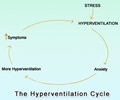Study reveals how fire fighters may be prone to Coronary heart disease.
A new study done in the United States suggests that the odds of firefighters dying from coronary heart disease within 24 hours of fighting a fire, are 10 to 100 times higher than during non-emergency duties such as rescuing a cat from a tree.
Stefanos Kales of Harvard Medical School and colleagues say episodic physical and psychological stress, carbon monoxide and toxic chemicals in smoke, and lack of physical fitness appeared responsible for it.Even though fire suppression represents only about one to five percent of fire fighters' professional time, the stress, smoke and sheer physical effort of battling a blaze accounted for 32 percent of deaths from coronary heart disease, the investigators found.
The findings, reported in the latest issue of the New England Journal of Medicine, emerged from a review of summaries provided by the Federal Emergency Management Agency of the deaths of all on-duty firefighters between 1994 and 2004, except for those associated with 9/11 terror attacks.
Fire departments should provide pre-placement and annual medical examinations for all firefighters, the researchers advised. Firefighters who enter the workforce are particularly healthy, but they do not necessarily stay so over time.
They are not immune to the hazards of overeating and inadequate exercise, said Linda Rosenstock and Jorn Olsen of the UCLA School of Public Health in Los Angeles in an accompanying editorial.
Wellness and fitness programmes are needed to reduce cardiovascular risk factors, and all firefighters should have annual physical performance evaluations.
Source-IANS
SRM
 MEDINDIA
MEDINDIA
 Email
Email










